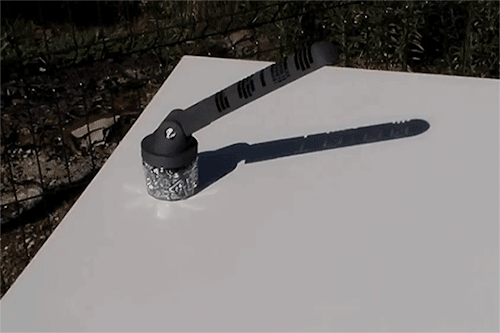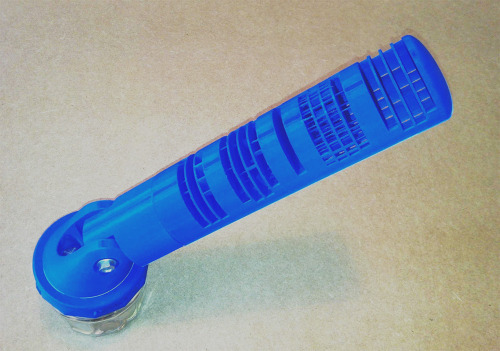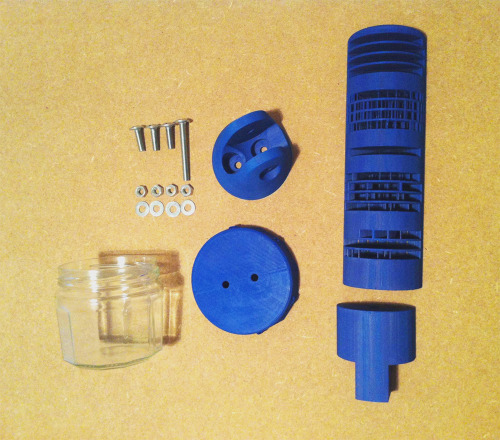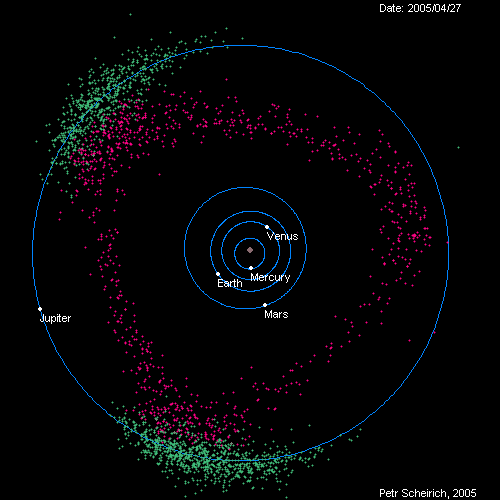Science-is-magical - Science Is Magic

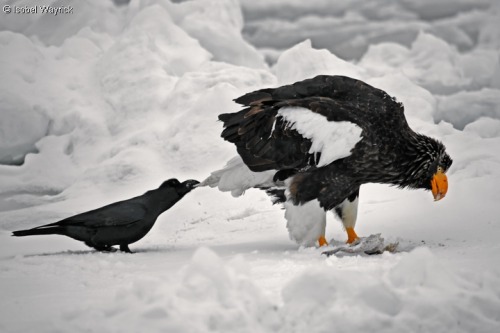
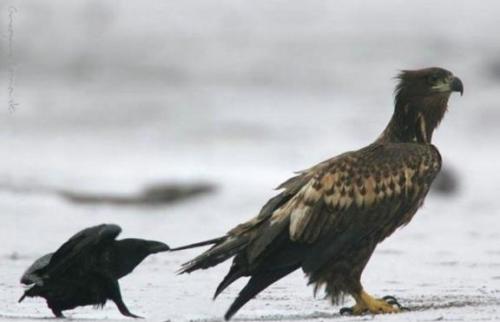
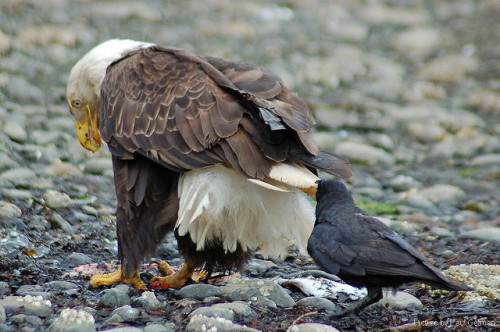
More Posts from Science-is-magical and Others

Drone with grabbing claw arms can lift 44 pounds
Prodrone’s latest creation could lift a four-year-old child, and uses its 5-axis metal claws to perch on fences like a bird.

the drum is filled with hot steam and then sprayed with cold water. the pressure on the outside of the drum is far more than inside. the pressures try to maintain and find balance taking the drum as a casualty.

A Powerful Solar Flare : It was one of the most powerful solar flares in recorded history. Occurring in 2003 and seen across the electromagnetic spectrum, the Sun briefly became over 100 times brighter in X-rays than normal. The day after this tremendous X 17 solar flare – and subsequent Coronal Mass Ejection (CME) – energetic particles emitted from the explosions struck the Earth, creating auroras and affecting satellites. The spacecraft that took these frames – SOHO – was put in a turtle-like safe mode to avoid further damage from this and subsequent solar particle storms. The featured time-lapse movie condenses into 10 seconds events that occurred over 4 hours. The CME, visible around the central sun-shade, appears about three-quarters of the way through the video, while frames toward the very end are progressively noisier as protons from the explosions strike SOHO’s LASCO detector. One this day in 1859, the effects of an even more powerful solar storm caused telegraphs on Earth to spark in what is known as the Carrington Event. Powerful solar storms such as these may create beautiful aurora-filled skies, but they also pose a real danger as they can damage satellites and even power grids across the Earth. via NASA
The 12 Cranial Nerves and Starbucks

When you walk into Starbucks and you..
I. Smell the coffee aroma (olfactory)..
II. Read the order menu from about 20 feet away (optic) then you..
III. Pupils constrict as you look at items, such as muffins, closer (oculomotor)..
IV. You look up at salesperson then down at your money as you pay (trochlear)..
V. You clench your teeth and touch your face when they called your drink (trigeminal)..
VI. You look side-to-side to see if anyone else has ordered the same drink (abdsucens)..
VII. You smile because you realize this IS your drink (facial), then..
VIII. You hear someone say “You can sit here, we are leaving” (auditory). As you sit..
IX. You taste the sweet whipped cream on the top of your drink (glossopharyngeal)..
X. You say “Ahhhh this is good!” (vagus)..
XI. You look at the person next to you because they heard you and then you shrug your shoulders (spinal accessory)..
XII. When they look away you stick your tongue at them (hypoglossal)!
Uhmm, how exactly were all of those megafauna able to grow that large and function??? And how the fuck was that giant bird actually able to fly????????
Realistic answer? Mostly because humans hadn’t come around and hunted them all to extinction yet. Dinosaurs are exempt from this because they vastly predated us, but almost anything that coincided with our timeline, we killed.
We are, for our relatively small size and frail, sometimes clumsy physical characteristics, a TERRIFYING species.
Evolution has produced all kinds of Big Shit. Ever seen a Paraceratherium?


Or a size chart for Sauropods that wasn’t produced before 1970?


Evolution likes to make things big. It tries this all the time. Whenever there’s a plentiful food source and enough space, things just get bigger and bigger.
The largest animal to have ever lived is alive right now. It’s the blue whale. And it’s truly a masterpiece of evolution’s drive to Go Bigger.



HOW THIS HAPPEN.
Basically, because they live in the ocean, space isn’t really an issue for them, and thanks to buoyancy, neither is their frankly ALARMING weight. The only real limit to their size is chemistry – whether they can possibly metabolize enough energy fast enough to stay alive at their size. Blue whales are estimated (having, for obvious reasons, never been measured in one piece) to be able to reach over 200 tons. As an average weight. Fluctuating with their feeding season. This was for a 98 foot long whale. The longest whales ever measured were 110 feet and 109 feet, both females. (Males tend to be slightly shorter, but heavier at any given length).
A blue whale can hold over 90 tons of food and water in its mouth.
They need 1.5 million kilocalories of food per day.
Blue whales are MASSIVE.
They are not the LONGEST animal in the world, though, just the heaviest. The longest is likely one of two things: the Lions Mane Jellyfish or the Bootlace Worm. The longest recorded Lions Mane Jellyfish washed up on shore with tentacles measuring 120 feet. It is unknown if they can be longer than this, but certainly possible given how fragile they are and the fact that this is just one that happened to get washed up on a beach.
The longest recorded bootlace worm SMASHES this record, but because of its stretchy body and the date of the recording (1864), the scientific accuracy is disputed. It also washed up on shore and measured 180 feet.
How far off topic am I this time?
Anyway yes animals get big sometimes. It helps deter predators when you’re too big to be hunted by anything. The only natural predator of the blue whale is killer whales. Regarding bears specifically, Brown Bears are in far more trouble than Black Bears because the Brown Bear line trends toward going bigger, which makes them easier targets for humans, while Black Bears have evolved to be shy and stealthy and avoid human contact. As a result, Brown bears are far larger, but far more likely to be driven to extinction by humans. Nature functions just fine if it’s left alone. We just ruin everything we touch. That’s why the largest individual crocodiles still living right now are the ones that have learned to avoid humans at all costs: conservation laws have not protected crocodiles from poaching long enough for them to get really, really big, even though we have significant historical records of crocodiles larger than what we generally see now. At least some of those records are considered to be reliable and put a couple extant crocodile species well over 20 feet – some over 22. The largest reliably measured crocodile was Lolong, a Saltwater crocodile in the Philippines who measured 20 feet 3 inches and died a few years ago.
And Argentavis magnificens was able to fly because it was designed to. Even with a massive 24 foot wingspan, it only weighed around 175 pounds, because birds have very lightweight skeletons. As impressive as the size was,

a living bird of that size probably weighed about as much, if not a bit less, than the man standing next to it. The surface area of its wings would have been sufficient to keep it in the air, mostly by gliding the way you see large modern birds of prey do. It would have resembled a condor or vulture, just much larger.




Listening To Music Releases Dopamine In The Brain
Have you ever been listening to a piece of music and experienced intense pleasure, even chills? Valorie Salimpoor and team (2010) conducted research that shows that listening to music can release the neurotransmitter dopamine.
A wide range of music — The researchers used PET (positron emission tomography) scans, fMRI, and psychophysiological measures such as heart rate to measure reactions while people listened to music. The participants provided music that they said gave them intense pleasure and chills. The range of music varied, from classical, folk, jazz, elecronica, rock pop, tango, and more.
Keep reading
-
 ardeotis liked this · 2 weeks ago
ardeotis liked this · 2 weeks ago -
 inuzuke reblogged this · 2 weeks ago
inuzuke reblogged this · 2 weeks ago -
 theunanimouscoward reblogged this · 1 month ago
theunanimouscoward reblogged this · 1 month ago -
 lauramakesart liked this · 1 month ago
lauramakesart liked this · 1 month ago -
 lastoftheptolemies reblogged this · 1 month ago
lastoftheptolemies reblogged this · 1 month ago -
 idealtheoreticalgenital liked this · 1 month ago
idealtheoreticalgenital liked this · 1 month ago -
 krystalrage reblogged this · 1 month ago
krystalrage reblogged this · 1 month ago -
 chuchuana reblogged this · 1 month ago
chuchuana reblogged this · 1 month ago -
 cuphead1753 liked this · 1 month ago
cuphead1753 liked this · 1 month ago -
 faylenlupus reblogged this · 1 month ago
faylenlupus reblogged this · 1 month ago -
 faylenlupus liked this · 1 month ago
faylenlupus liked this · 1 month ago -
 clloudysstuff liked this · 1 month ago
clloudysstuff liked this · 1 month ago -
 beckithy liked this · 1 month ago
beckithy liked this · 1 month ago -
 darkmatterblade reblogged this · 1 month ago
darkmatterblade reblogged this · 1 month ago -
 nimalix reblogged this · 2 months ago
nimalix reblogged this · 2 months ago -
 nimalix liked this · 2 months ago
nimalix liked this · 2 months ago -
 twasrafael liked this · 2 months ago
twasrafael liked this · 2 months ago -
 sunray-sunray reblogged this · 2 months ago
sunray-sunray reblogged this · 2 months ago -
 kissbliss liked this · 2 months ago
kissbliss liked this · 2 months ago -
 siunattuseitan reblogged this · 2 months ago
siunattuseitan reblogged this · 2 months ago -
 trollilolli reblogged this · 2 months ago
trollilolli reblogged this · 2 months ago -
 macsarcule1 reblogged this · 2 months ago
macsarcule1 reblogged this · 2 months ago -
 minneapolisatnite liked this · 2 months ago
minneapolisatnite liked this · 2 months ago -
 lost-carcosa reblogged this · 2 months ago
lost-carcosa reblogged this · 2 months ago -
 marmaladewander liked this · 2 months ago
marmaladewander liked this · 2 months ago -
 confusedgoblin reblogged this · 2 months ago
confusedgoblin reblogged this · 2 months ago -
 confusedgoblin liked this · 2 months ago
confusedgoblin liked this · 2 months ago -
 sofia2345 reblogged this · 2 months ago
sofia2345 reblogged this · 2 months ago -
 sofia2345 liked this · 2 months ago
sofia2345 liked this · 2 months ago -
 stickyravenbakery reblogged this · 2 months ago
stickyravenbakery reblogged this · 2 months ago -
 jernostrapig reblogged this · 2 months ago
jernostrapig reblogged this · 2 months ago -
 pumpkinpieandflowers liked this · 2 months ago
pumpkinpieandflowers liked this · 2 months ago -
 chailatteus liked this · 3 months ago
chailatteus liked this · 3 months ago -
 drumpenguin reblogged this · 3 months ago
drumpenguin reblogged this · 3 months ago -
 drumpenguin liked this · 3 months ago
drumpenguin liked this · 3 months ago -
 herehaveafandom reblogged this · 3 months ago
herehaveafandom reblogged this · 3 months ago -
 theteaaddict reblogged this · 3 months ago
theteaaddict reblogged this · 3 months ago -
 zanyquil liked this · 3 months ago
zanyquil liked this · 3 months ago -
 agles liked this · 3 months ago
agles liked this · 3 months ago -
 egraft liked this · 3 months ago
egraft liked this · 3 months ago -
 timeeuclidean liked this · 3 months ago
timeeuclidean liked this · 3 months ago -
 midnightconstellationcoven liked this · 3 months ago
midnightconstellationcoven liked this · 3 months ago -
 posionivy0061 reblogged this · 4 months ago
posionivy0061 reblogged this · 4 months ago -
 bre99 reblogged this · 4 months ago
bre99 reblogged this · 4 months ago -
 bre99 liked this · 4 months ago
bre99 liked this · 4 months ago -
 0bticeo reblogged this · 4 months ago
0bticeo reblogged this · 4 months ago -
 black-omega-04 liked this · 4 months ago
black-omega-04 liked this · 4 months ago

